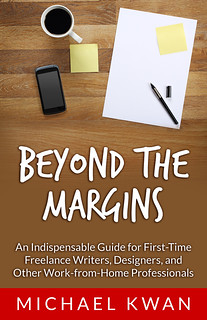In Robert Cialdini’s book Influence: The Psychology of Persuasion, he breaks down the factors that make our decisions into six main areas: reciprocation, authority, likability, scarcity, social proof, and consistency.
Our minds are designed to follow the path of least resistance and so, in virtually every part of our lives, we operate in auto-mode. We like to think that our decisions are our own, but science has a very different story. Since we’re unable to critically and fully look at every aspect of our lives and critically and fully examine every shred of evidence, we rely on those six areas to make up a vast majority of our decision making process. While there’s value in automatically following these, there’s danger as well.
What’s Money Got To Do With It?
Just so we know how this fits, let’s look at one area in particular: authority.
If you’ve been reading this column, I’d like to offer my congratulations. You essentially now have more financial knowledge than 99% of the entire industry. That guy at the bank? That financial advisor? That accountant who’s playing know-it-all about finance? Chances are, if they’re talking to you, they know lickity-split about anything and they manage to persuade too many people using all six rules of persuasion. And finance is an area you can’t afford to simply go into auto mode.
How They Pull It Off
If you’ve ever sat down with a “professional” to talk about money, and you’ve gotten to the stage where you want to move forward, in order to decide what investment is right for you, they’ll take you through a process of asking you questions and showing you diagrams. The questions are for two reasons.
First, they want to understand your risk tolerance (conservative, moderate or aggressive). As you should know by now, the idea of risk tolerance is absolute nonsense for two reasons. There’s no such thing as a conservative investment and the only expected rate of return you should be concerned with is “as much as possible.” The second reason they go through this is to cover themselves legally. If they’ve gone through this process, you can no longer sue the advisor, since they invested your money within your “risk tolerance” range.
Once they’ve done that, they will show you a chart showing the past performance of the markets to quell any lingering fears of a volatile market and assure you that markets always correct themselves and they always go up. Again, as we all know, this is nonsense. Markets do not consistently go up. There is no such thing as an infinite amount of money, so how can any market continue to go up forever?
You can see how the laymen can be fooled. The presentation is very slick, the person you’re talking to is in a suit, and they have the proper licensing.
Why Does This Happen?
You may be wondering to yourself, “Why don’t they just tell the truth?”
The investment companies that sell investment products through advisors don’t have the time to fully explain everything to the advisors. The amount of research and study needed to be able to have a strong belief system in the way of investing is too high to have an effective sales force. So, by creating a test to certify advisors and teaching them a slick looking sales process, you now have a sales force that believes that the markets will always go up and that your risk tolerance makes a difference in your decision.
It’s Okay To Think For Yourself
The main problem I see with this business model is that it heavily relies on the relationship built between the client and advisor. The classic rule of business is to work with people you know, like and trust.
By using the rules of reciprocation (complimenting you, taking you for lunch), authority (those letters of certification on their business card), social proof (they show you a page full of satisfied client reviews), scarcity (they tell you why acting now is more important than later), likability (they’ll crack jokes and smile during the meeting), and consistency (they’ll make you agree to small ideas that lead you to bigger commitments), advisors have built up books of clients that can’t say no. They’ve built a relationship of knowing, liking and trusting.
The truth is there is never a bad time to take a step back and think for yourself.






Recent Comments